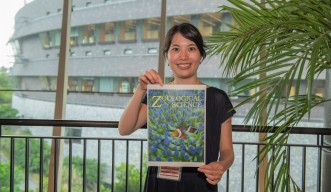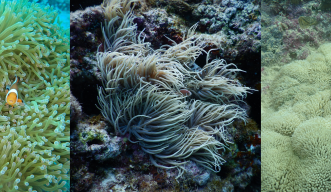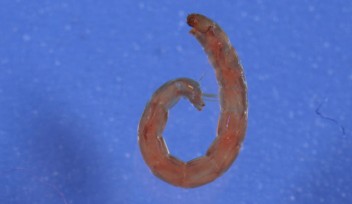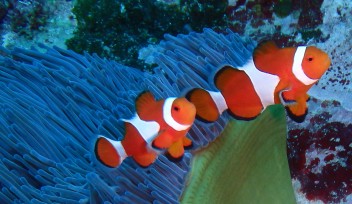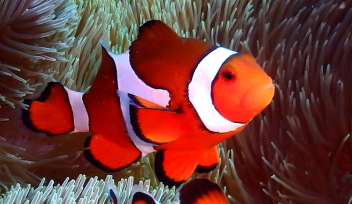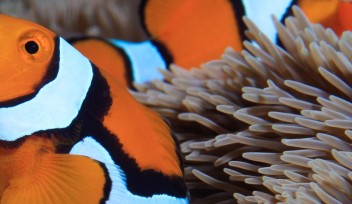Tentacles taken from giant sea anemones reveal new genetic insights into Nemo’s home
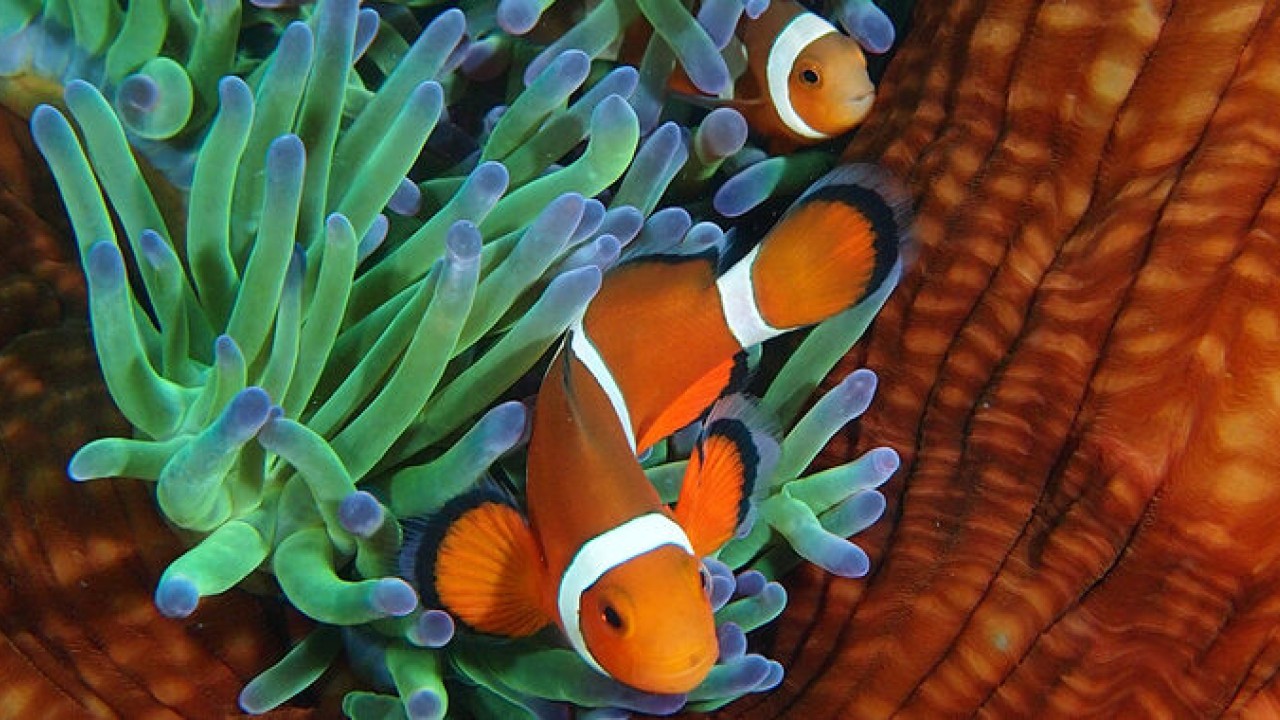
Despite the long, dangerous journey depicted in Pixar’s “Finding Nemo”, clownfish (and other species of anemonefish) are, in real life, deeply attached to their underwater homes. As young larvae, anemonefish choose a giant sea anemone – tentacled creatures from the phyla Cnidaria – to settle on, remaining there for the rest of their lives.
Anemonefish have been the subject of extensive scientific research, but much less is known about the hosts that they depend upon. Now, a study led by scientists from the Okinawa Institute of Science and Technology (OIST) has revealed new details about the evolutionary history of giant sea anemones and, in the future, could help provide a deeper understanding of the interactions between anemonefish and their hosts. The study was published as the cover story in the August edition of Zoological Science.
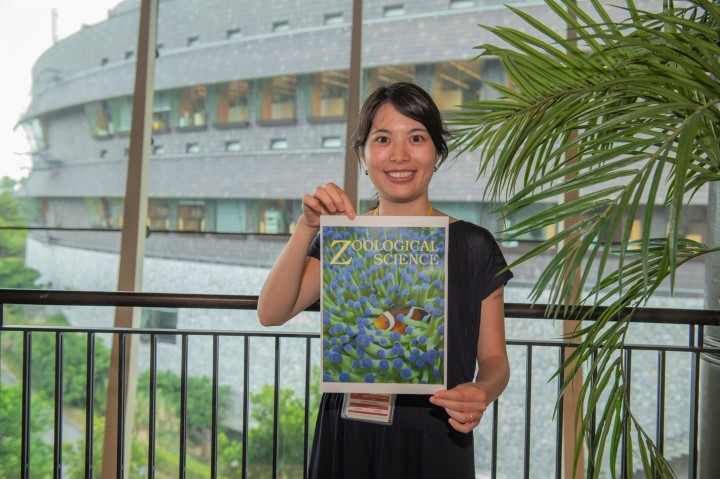
“Anemonefish and giant sea anemones form one of the most iconic mutual partnerships seen on coral reefs,” said Professor Vincent Laudet, who heads the Marine Eco-Evo-Devo Unit at OIST. “The fish are protected by the anemone’s tentacles, which do not sting them. In return, the fish defend the anemone from predators and boosts the anemone’s metabolism.
“But,” he continued, “there are so many questions we still need to answer. We still don’t know the exact molecular mechanisms that prevent the anemonefish from being stung, or why only certain species of giant sea anemone can act as host for each species of anemonefish. More molecular information about sea anemones is essential.”
In the study, researchers cut tentacles from individuals of seven different species of giant sea anemone, which act as hosts for the six different species of anemonefish found in Okinawa.
The scientists then used RNA-seq, a technique which is cheaper and easier than sequencing genomes, to reveal all the different molecules of RNA produced in the anemone tentacles. The researchers identified thousands of sea anemone genes and used a group of these genes, which are common to all cnidarians, to construct an evolutionary tree. Compared to previous trees, this tree was able to determine, for the first time, how the different species of anemone are evolutionarily related to each other.
The evolutionary trees confirmed that giant sea anemones are clustered into three major groups - Entacmaea, Heteractis and Stichodactyla. The tree also corroborated previous research, finding that the giant sea anemone, Heteractis magnifica, which is currently classified within Heteractis, is actually more closely related to Stichodactyla sea anemones.
“H. magnifica has a very misleading appearance. The long tentacles looks like those seen on other Heteractis anemones, rather than thecarpet-like tentacles seen in Stichodactyla,” said Rio Kashimoto, a PhD student in the Marine Eco-Evo-Devo Unit and first author of the study. “Appearance has real limitations when it comes to species identification, so that’s why we need molecular data.”
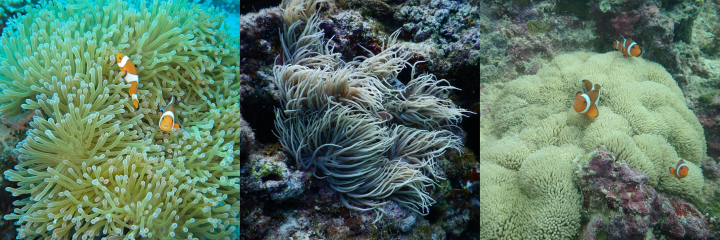
The researchers also focused on genes related to nematocytes – the stinging cells found in cnidarians – and a crucial part of the puzzle to understanding how anemonefish and giant sea anemones interact.
“Understanding the genes involved in nematocyte function and therefore the toxicity of an anemone species is a key part of understanding what makes a giant sea anemone a suitable host for specific anemonefish,” explained Kashimoto.
The research group identified around 200 potential nematocyte genes by using known nematocyte genes and proteins in other cnidarian species as a reference. When they constructed an evolutionary tree using only these genes, it showed the same branching structure as the phylogenetic tree the researchers had previously constructed, meaning that these potential nematocyte genes are most similar to those within the same group. This included H. magnifica, which has nematocyte genes that are more closely related to its true evolutionary group, Stichodactyla.
The scientists also found that the number of potential genes associated with nematocytes was similar for all giant sea anemone species. This suggests that differences in toxicity is more likely to be a result of changes in just a few genes, or in how strongly the genes are expressed.
Moving forward, the research group plan to look at changes in expression levels, both across different giant sea anemone species, but also between those of the same species that have or have not been hosts for anemonefish.
The researchers also have a project in progress to sequence the complete genomes of giant sea anemones.
“Having access to information about the full genome will allow us to better understand the mechanisms underlying toxicity of these giant sea anemone and therefore their association with anemonefish,” said Konstantin Khalturin, senior author and former staff scientist in the OIST Marine Genomics Unit.
Article Information
Title: Transcriptomes of Giant Sea Anemones from Okinawa as a Tool for Understanding Their Phylogeny and Symbiotic Relationships with Anemonefish
Journal: Zoological Science
Authors: Rio Kashimoto, Miyako Tanimoto, Saori Miura, Noriyuki Satoh, Vincent Laudet, Konstantin Khalturin
Date: 2 May 2022
DOI: 10.2108/zs210111
For press enquiries:
Press Inquiry Form










